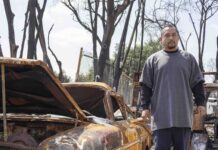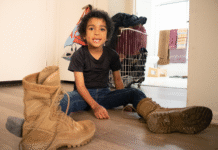Tree canopies provide needed shade in urban landscapes for Angelenos to escape the heat
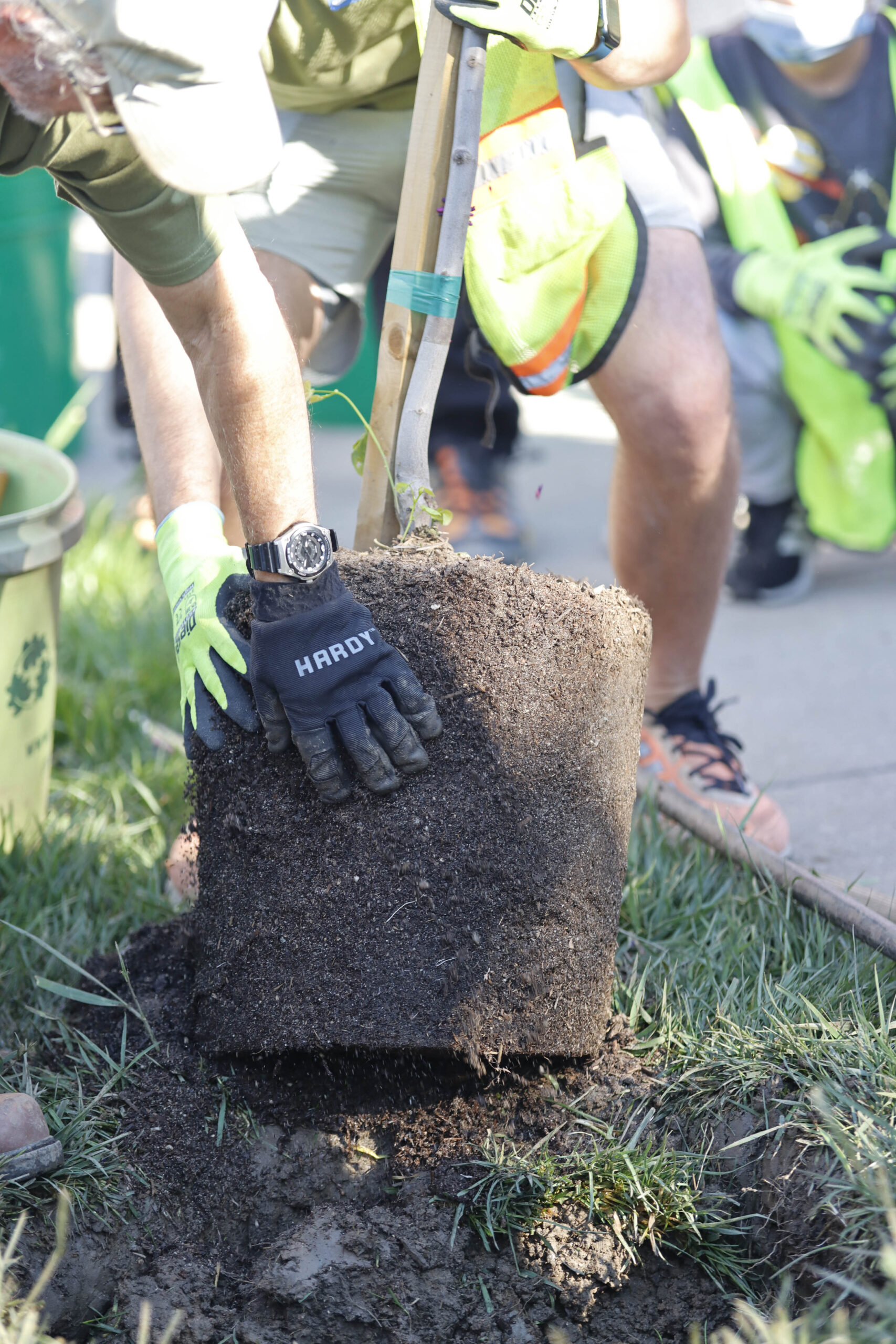
There are many areas in the urban landscape of Los Angeles that lack adequate shady outdoor spaces for people to find refuge from the scorching Southern California heat.
As temperatures consistently rise to record-breaking highs, the number of heat related deaths is likely to increase.
That’s why TreePeople distribute planting resources in several neighborhoods across Los Angeles. One of these places is within the heart of the Valley where volunteers gathered in March for a Calles Verdes (Green Streets in Spanish) tree planting event on Fourth Street in San Fernando.
Men and women in green TreePeople shirts, along with a slew of volunteers, planted about 35 trees known for increasing shade.
After digging, rearranging and plopping the tree saplings in place and carrying buckets of water to finalize their planting, volunteers continued to walk down the sidewalk under the unforgiving sun to find the next planting spot.
TreePeople’s CEO Cindy Montañez said that planting trees is vital to saving people’s lives.
“Because trees function like an air conditioner, where they allow cool air from the soil to go up into the air, the leaves and branches help maintain cooler temperatures and protect people,” Montañez said. “What we have found is that more people die during extreme heat than any other weather related disaster combined. And that’s why we as TreePeople have made it a priority to plant as many trees as we possibly can.”
It gets worse for communities where there are more concrete and buildings than soil and trees. Temperatures can easily rise higher, not only because of the sun, but because of the heat that is trapped inside due to the ozone barrier.
Accelerate Resilience Los Angeles (ARLA) reported that temperatures can get as high as 120 degrees, and if things continue like this, temperatures ranging from 90-95 degrees could become the norm. The people who are affected the most by heat-stress related illnesses include the elderly, Black, Latino and low-income communities.
Co-founder of the Los Angeles Urban Cooling Collaborative (LAUCC) Edith de Guzman said that she was working with TreePeople when she began finding how tree canopies can be used to mitigate the heat trapped in urban residential areas.
“This is an issue that impacts low income communities and communities of color, because those are the spaces where more heating is retained,” Guzman said. “So there’s less shade and there’s less ability to get out of the heat into air-conditioned cold spaces.”
To prevent this, TreePeople and the LAUCC have concluded that trees need to be grown in areas where there are fewer canopies. Trees are the catalyst in filtering air and water, and they provide shade and beauty to communities that lack resources.
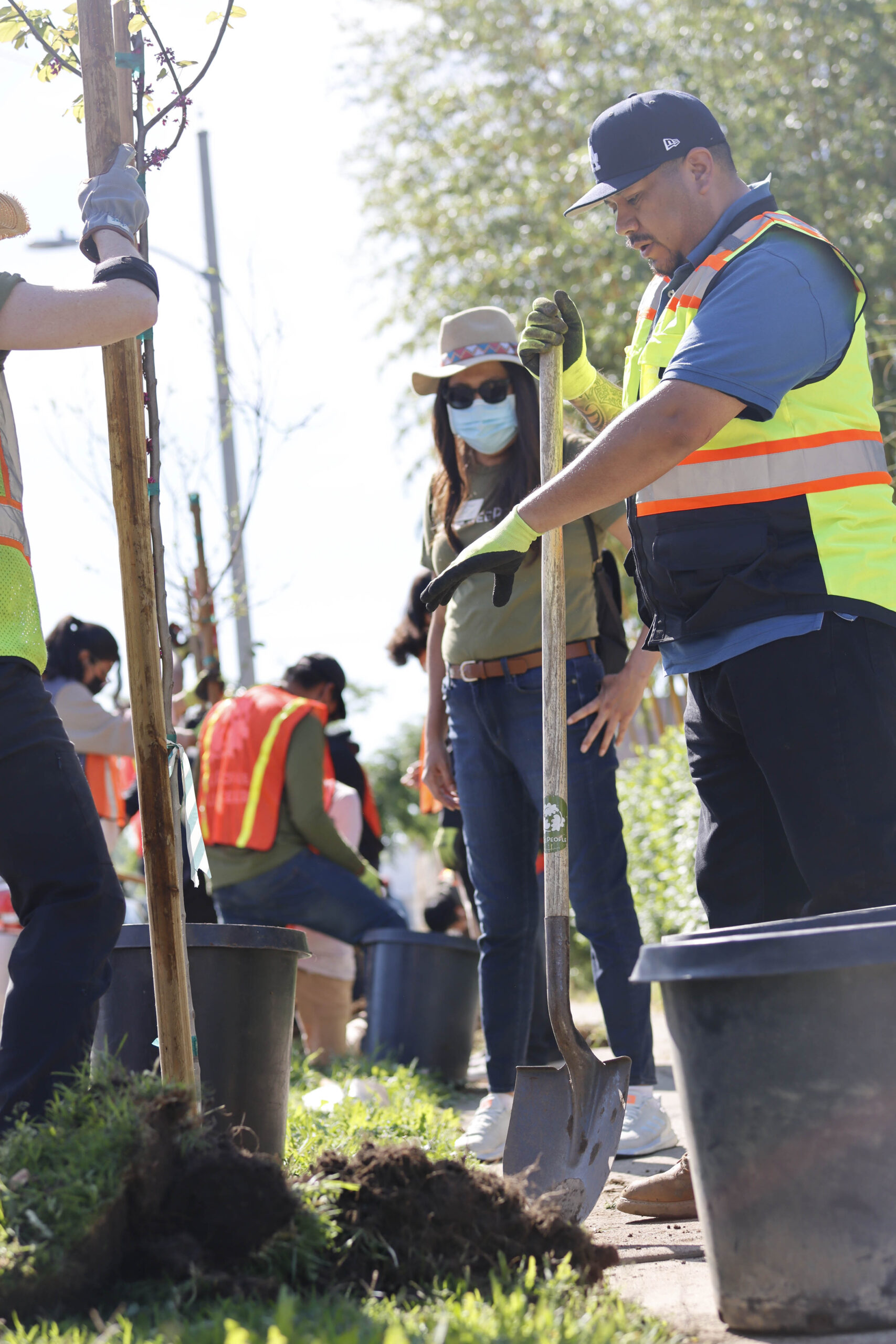
Volunteer Beto Gonzales (right) speaks with CEO Cindy Montañez (center) about a tree planting he is working on at a Calles Verdes tree planting event organized by TreePeople in San Fernando, Calif. Photo by Raquel G. Frohlich.
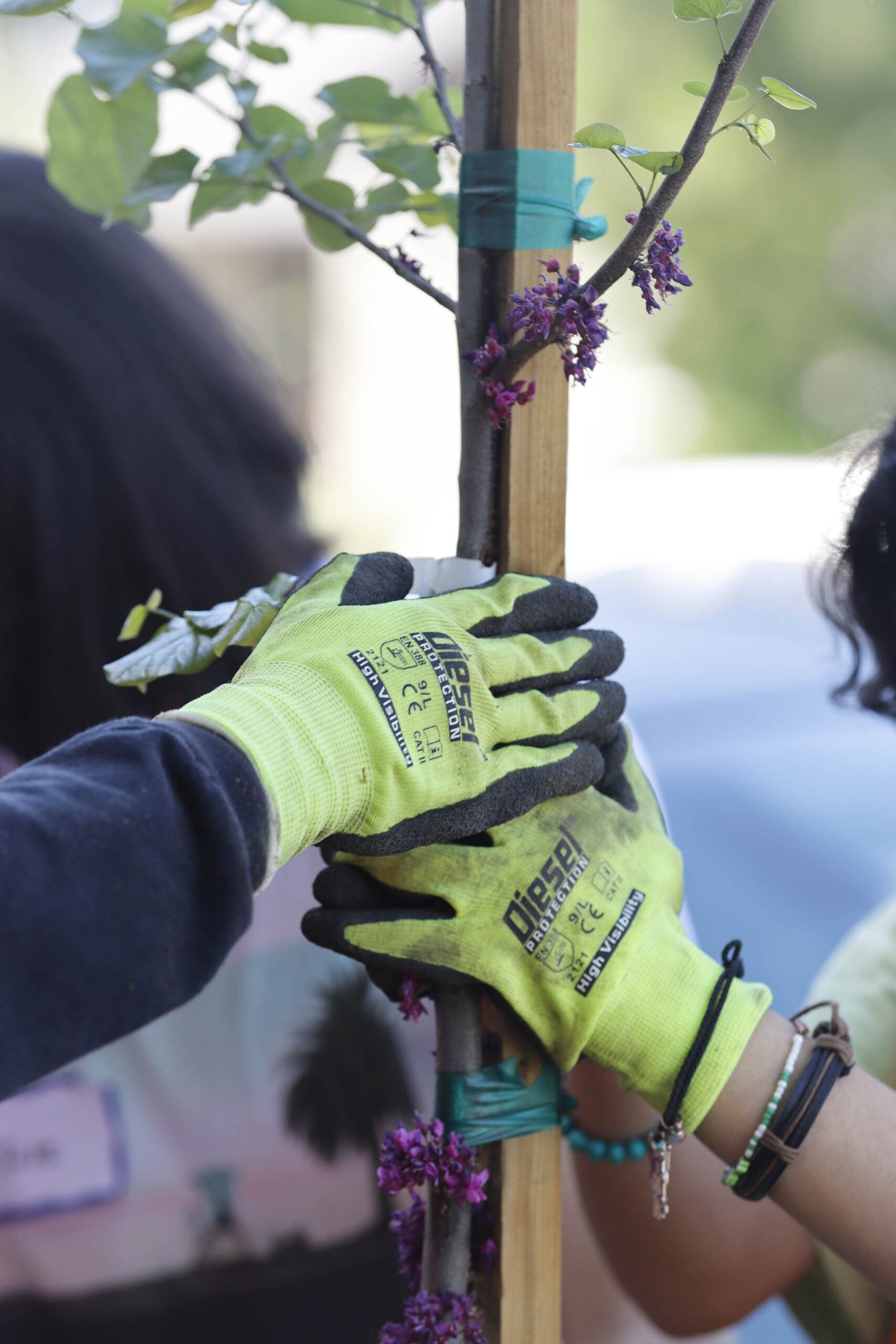
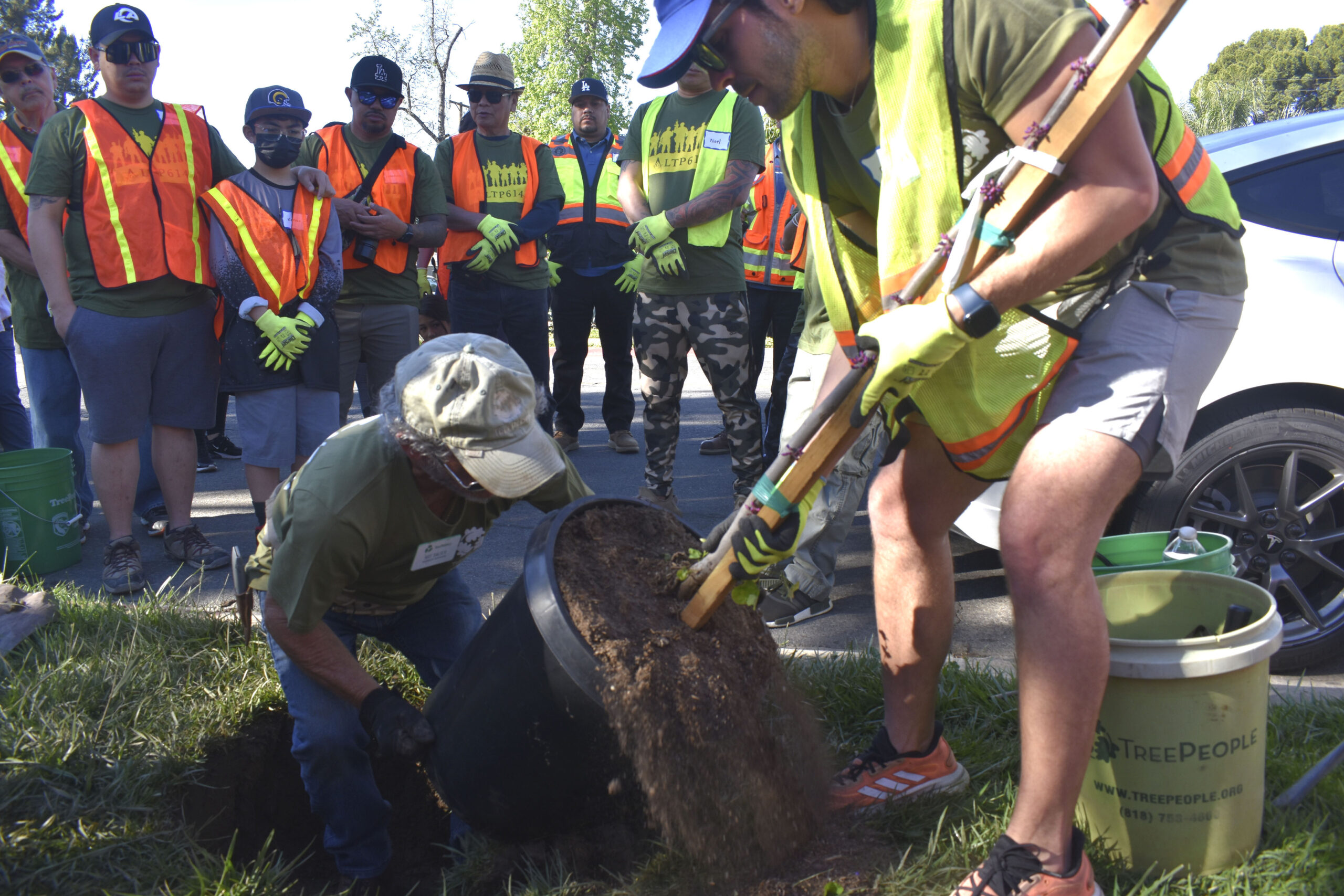
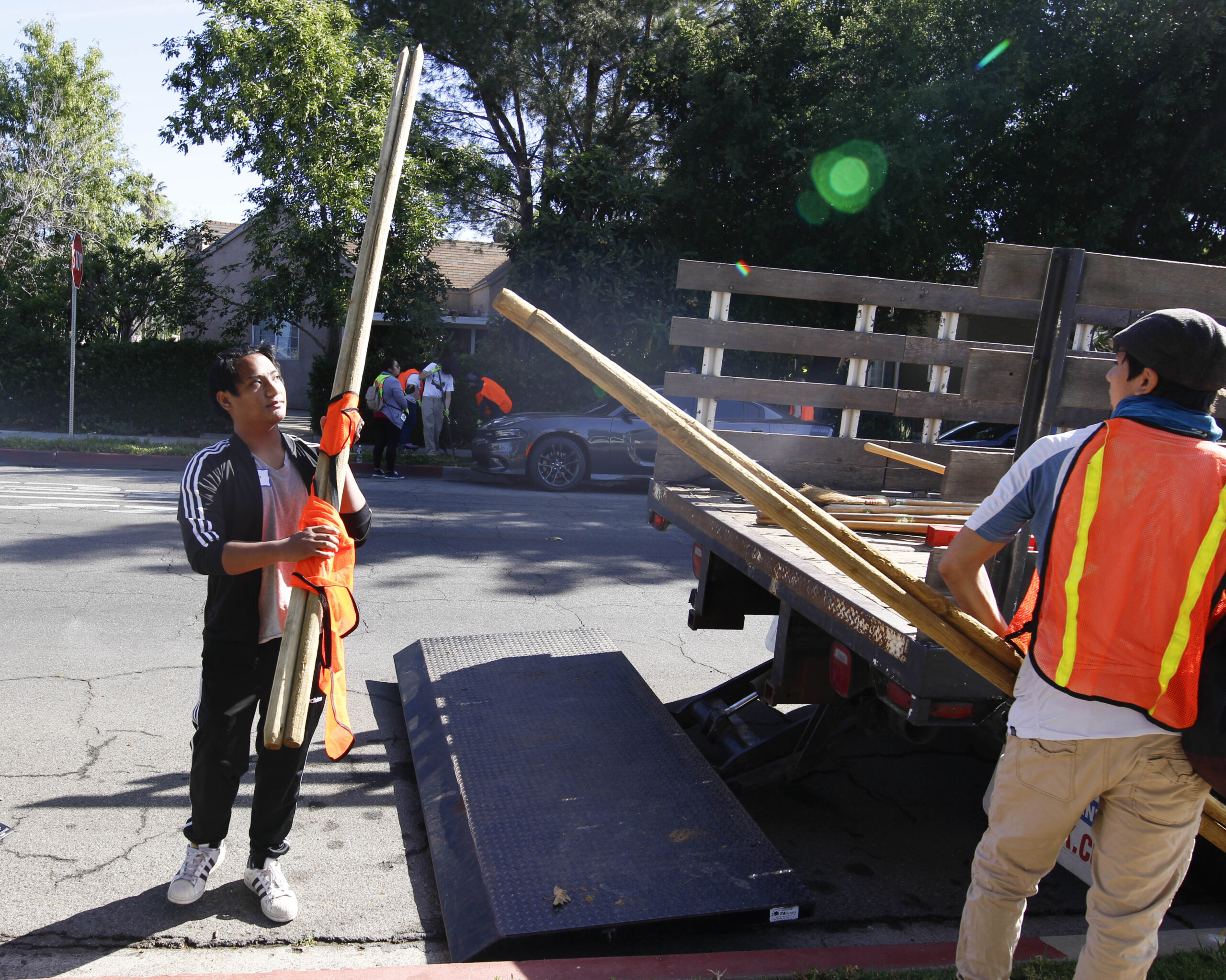
Senior Manager of Community Forestry Eileen Garcia has planted more than 1,400 trees in Huntington Park and in other areas around South and East Los Angeles. She said that trees were always an integral part of her life growing up where her grandparents who had immigrated planted trees in their backyard, and kids talked fondly about it.
“I don’t think I realized how important and how beautiful [these trees] were to me until I started kindergarten,” Garcia said. “There were some kids who were like, ‘Whoa, you live in the jungle house.’ And that’s the first time it made me stop and really look at the gardens that my grandparents created, versus what was happening in the city around me.”
Garcia also said it’s not a coincidence that she’s working with TreePeople to spread the word on how roots need to grow from a solid foundation, starting with connecting locals about this issue.
“And I don’t think it’s a coincidence now that I work on trucks, and that I plant trees and that it’s important to me. I understand in my heart the importance of having nature, especially as a child. It decreases stress as an adult,” Garcia said.
Providing space for trees has more positives compared to negatives. According to the President of Applied Climatologist Inc. Laurence Kalkstein said urban canopy can reduce high temperatures by three degrees, which may mean the difference between life and death for some people.
Kalkstein mentioned that although humidity has increased, it doesn’t negate the positive impact trees can have toward saving lives.
“There’s one negative of tree planting, evapotranspiration, which increases when it gets warmer,” he said. “It is the movement of liquid water into a gaseous state through the stalemates of leaves of trees [adding] water vapor to the atmosphere and [increasing] humidity. The benefits of cooling the temperature using trees outweigh the negative of increasing the humidity.”
Besides planting trees, adding solar-reflective roofing or painting surfaces white can also reduce indoor temperatures and can be effective in reducing health risks and protecting people.
3MM expert Tim Hebrink said if 25 percent of the population install cool-roofs, which have granules that reflect sunlight and heat, it will be effective in mitigating the issue.
“If you can apply our film to enough roofs, the temperature of the entire city will go down by a degree or two. Everybody’s air conditioning use goes down,” Hebrink said.
Other solutions include people proactively looking after their community, such as monitoring their older neighbors or allowing people to go inside air-conditioned buildings when there is a powerful heat-wave.
TreePeople continues to plan more initiatives to grow more trees in several communities. TreePeople San Fernando Valley Community Organizer Cindy Villegas said that she understands the benefits trees have and wants more people to realize what they mean to a community.
“For me, walking on a street that doesn’t have any trees definitely feels unfair, as opposed to walking on the street that has shade,” Villegas said. “It’s just aesthetically pleasing and really beautifying. I think that cities like San Fernando that are much smaller are built to be walkable streets. By planting trees, it allows those streets to feel safer and greener.”


